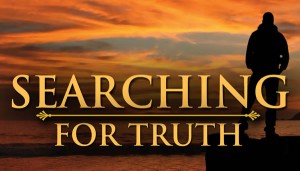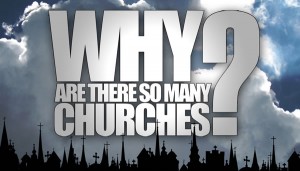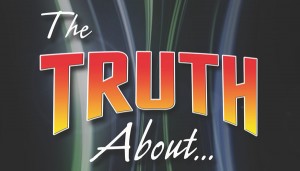The Minor Prophets are some of the most difficult books of the Bible to read. But it is not because their message is hard to understand, it is just so hard to accept. As some of the disciples once told Christ: “This is a hard saying; who can listen to it” (John 6:60 ESV)? Then, as now, those who come to the Lord must seek him through his word and prepare themselves to hear, since it is he alone who has “the words of eternal life” (John 6:68). As one of Hosea’s contemporaries wrote, “Incline your ear, and come to me; hear, that your soul may live; and I will make with you an everlasting covenant, my steadfast, sure love for David” (Isa 55:3).
Reading Hosea (or any other part of the Bible) therefore requires preparation on the part of the listener, especially when the message is one that will hurt before it heals. Such begins by understanding a bit about the world of the inspired writer and his first audience. Hosea’s ministry spanned thirty-three years, from about 755 B.C. to the fall of the northern kingdom in 722. The stability and wealth of the early eighth century led to rampant unfaithfulness in both worship and the home. So as a final warning to Israel, God instructed Hosea to marry a “wife of whoredom” (Hos 1:2), who would serve as a tragic illustration of Israel’s own unfaithfulness toward God.
Hosea, then, is written as a sharp and bitter satire, whose focus is “the exposure of human vice or folly” (ESVSB). The prophet therefore employs intentionally shocking language, vivid imagery and legal terms to emphasize God’s desire for justice and righteousness. Such an emphasis was especially relevant because of the primary form of Israel’s unfaithfulness: Baal worship. Several aspects of this are apparent in the book, “such as drunkenness, bestiality, human sacrifice, mutilations, and incest . . . but Hosea understands the strength of Baalism’s appeal to the sex drive by way of ritual prostitution” (ESVSB).
Hosea’s prophecies are soon fulfilled through “at least six incursions into Palestine and its neighbors by an unstoppable Assyrian army” (ESVSB). Even in the face of such judgment, however, Hosea (who shares a name with Joshua and Jesus—all of which mean “Salvation” or “Yahweh Saves”) shows the depth of God’s steadfast love for his people, a jealous love that tolerates no rivals. As Theodoret observed, “The reason that the God of all threatens punishment . . . is not to inflict it on those he threatens but to strike them with fear and lead them to repentance, and by ridding them of their wicked behavior extend to them salvation” (Commentary on Hosea, “Introduction”). Hosea, then, is the emotional and tragic plea of the Lord to his bride to return to him in true love and purity, and stands as an important figure by which to examine the church of our Lord today.
A quick note on sources: When I first prepared this material for our Sunday morning adult study, I began with The ESV Study Bible, The NET Bible, the Ancient Christian Commentary on the Scriptures, plus some rudimentary Hebrew studies (we’re talking basic) and then branched out as needed to fill in their gaps. My branching out, however, became much more extensive than I originally intended. Since our class was also fairly heavy on textual and interpretation issues, I have also summarized heavily in order to adapt this material for the blog. So rather than provide a unique Works Cited each week, I’ve posted a comprehensive list of Works Consulted & Further Reading for your reference at the bottom of this first post, which I will link back to each week for ease of use.
Works Consulted & Further Reading
Unless otherwise indicated, all works from Bible Study with Accordance.
- ACCS = Ancient Christian Commentary on Scripture. Ed. Thomas C. Oden. InterVarsity, 2003. My source for all quotes from the Church Fathers.
- BHS = Biblia Hebraica Stuttgartensia. Ed. Karl Elliger, William Rudolph, et al. 4th Ed. Adrian Schenker. Stuttgart: German Bible Society, 1983. The standard Hebrew Bible.
- BKC = The Bible Knowledge Commentary. Ed. John F. Walvoord & Roy B. Zuck. Cook, 1989.
- Clarke = Adam Clarke. Commentary on the Whole Bible. Public Domain.
- EDBW = Expository Dictionary of Bible Words. Ed. Stephen D. Renn. Peabody: Hendrickson, 2005.
- ESVSB = The ESV Study Bible. Ed. Lane T. Dennis & Wayne Grudem. Wheaton: Crossway, 2008.
- HCSB = Holman Christian Standard Bible. Nashville: Holman, 2003.
- HIBD = Holman Illustrated Bible Dictionary. Ed. Chad Brand, Charles Draper & Archie England. Nashville: Holman, 2003.
- JFB = Robert Jamieson, A. R. Fausset & David Brown. Commentary Critical and Explanatory on the Whole Bible. 1871. Public Domain.
- KJV = King James Version. 1769. Public Domain.
- Lang & Ward = Outline of Bible Books. Ed. David Lang & Greg Ward. OakTree: 1997.
- LASB = Life Application Study Bible. Wheaton: Tyndale, 2004.
- Lewis = C.S. Lewis. Mere Christianity. 1952. New York: HarperCollins, 2001. Print.
- LXX = The Greek Septuagint. Ed. Alfred Rahlfs & Robert Hanhart. Stuttgart: German Bible Society: 2006. The standard Greek translation of the Old Testament.
- The Message = Eugene Peterson. The Message: The Bible in Contemporary Language. 2002.
- NASB = The New American Standard Bible. Lockman, 1995.
- NBC = New Bible Commentary. Ed. D.A. Carson, R.T. France, J.A. Motyer & G.J. Wenham. InterVarsity, 1994.
- NET = The NET Bible. Ed. W. Hall Harris III & Michael H. Burer. Biblical Studies, 2005.
- NIV = The Holy Bible: New International Version. Biblica, 2011.
- NKJV = New King James Version. Nashville: Nelson, 1982.
- NLT = Holy Bible, New Living Translation. Second Edition. Wheaton: Tyndale, 2004.
- RSV = Revised Standard Version. NCC Division of Christian Education, 1971.
- TC = David Allan Hubbard. Hosea: An Introduction and Commentary. Ed. Donald J. Wiseman. Tyndale Commentaries. Vol. 24. InterVarsity, 2009.
Cross-posted from In His Image.





